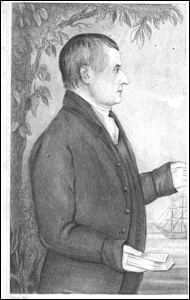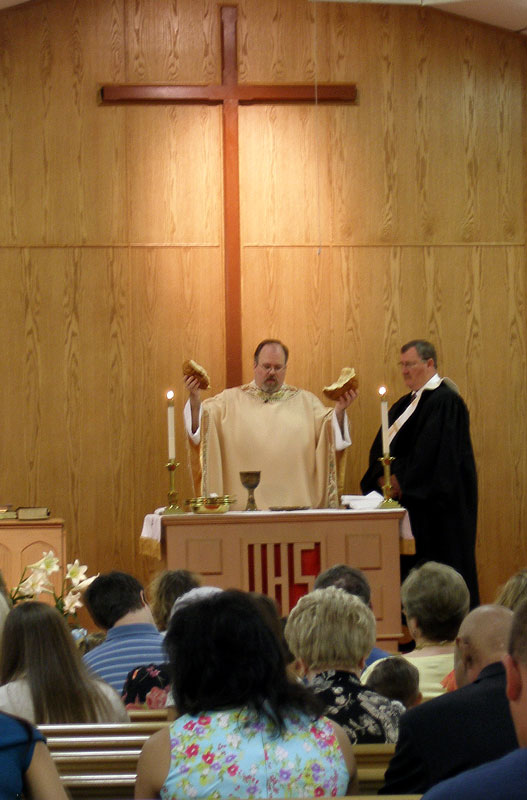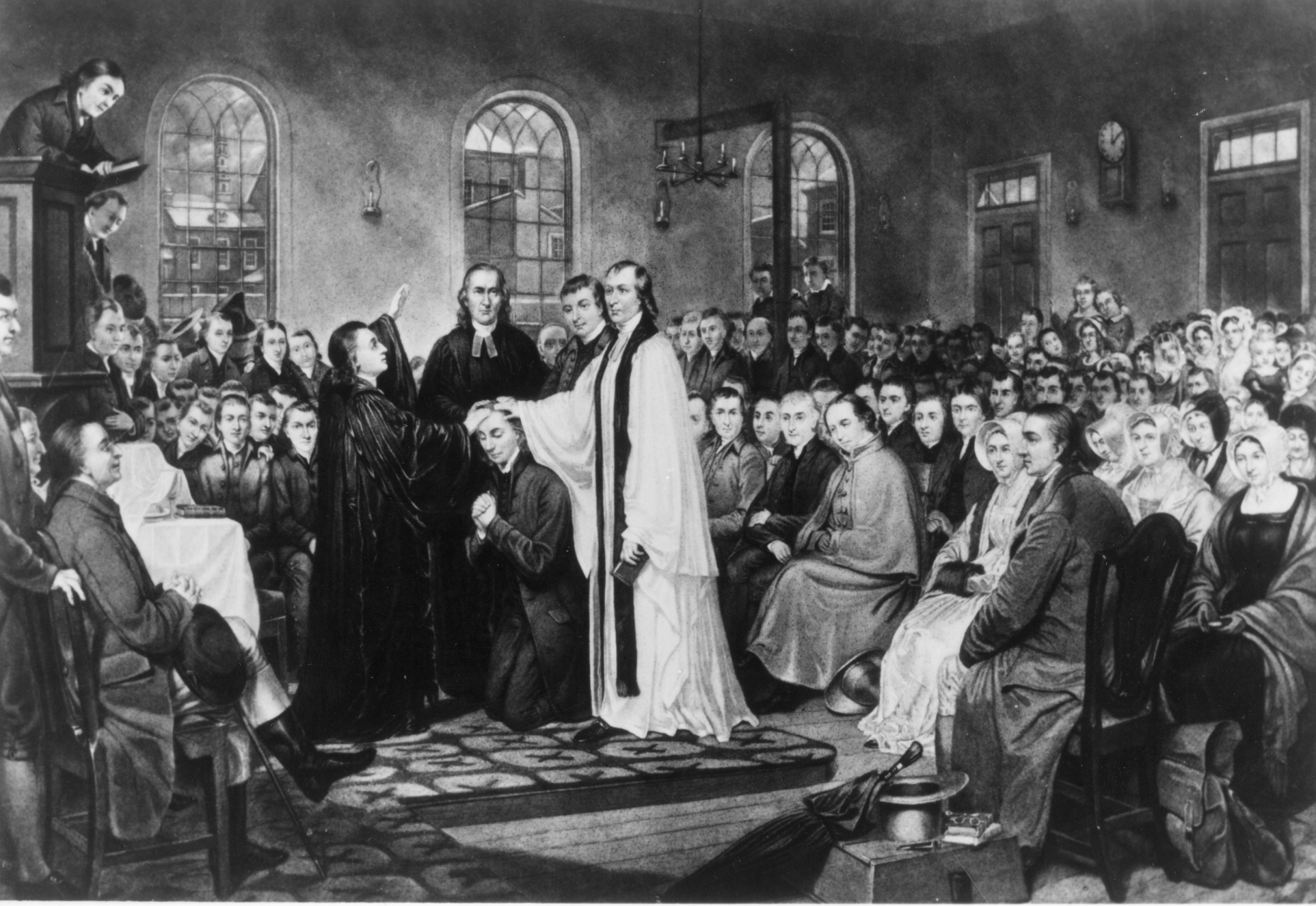|
United Methodist Church (Great Britain)
The United Methodist Church in Great Britain was a Protestant denomination which operated from 1907 to 1932. It was a relatively small grouping of British Methodism, formed in 1907 by the union of the United Methodist Free Churches with two other small groupings, the Bible Christian Church and the Methodist New Connexion. Formation The United Methodist Church Act 1907 ( 7 Edw. 7. c. lxxv), the act of Parliament which enabled this amalgamation, received royal assent on 26 July 1907, and authorised the union "to deal with real and personal property belonging to the said three churches or denominations, to provide for the vesting of the said property in trust for the United Church so formed and for the assimilation of the trusts thereof, and for other purposes". The union was completed on 16 September 1907 in Wesley's Chapel, City Road, London. The Church gave power of speech and vote in its meetings to every member of 18 years of age and upwards. Its principal courts were co ... [...More Info...] [...Related Items...] OR: [Wikipedia] [Google] [Baidu] |
Methodist Church Of Great Britain
The Methodist Church of Great Britain is a Protestantism, Protestant List of Christian denominations, Christian denomination in Britain, and the mother church to Methodism, Methodists worldwide. It participates in the World Methodist Council. Methodism traces its origins to the evangelical Christian revival, revival led by John Wesley in 18th-century Britain, and his teachings continue to play a primary role in shaping the church's doctrine and practice. John Wesley, an Anglican priest, adopted unconventional and controversial practices, such as open-air preaching, to reach factory labourers and newly urbanised masses uprooted from their traditional village culture at the start of the Industrial Revolution. His preaching centred upon the universality of God's Grace in Christianity, grace for all, the Sanctification in Christianity, transforming effect of faith on character, and the possibility of Christian perfection, perfection in love during this life. He organised the new con ... [...More Info...] [...Related Items...] OR: [Wikipedia] [Google] [Baidu] |
Shebbear College
Shebbear College is an all-through school, all-through Private schools in the United Kingdom, private co-educational day and boarding school for pupils aged 4 – 18 situated in Shebbear, Devon, Shebbear, Devon, England. The school's 85-acre rural campus is situated in the Devon countryside. It was founded by the Bible Christian Society in 1829. History Bible Christian Church The Bible Christian Church was one of the denominations that merged in the United Methodist Church (Great Britain), United Methodist Church in 1907. Its early preachers appealed solely to the Bible in confirmation of their doctrines. The denomination arose in the agricultural districts and fishing villages of north Cornwall and Devon; a district only slightly influenced by John Wesley and the original Methodist movement. The founder of the movement was William O'Bryan, a Wesleyan Methodist Church (Great Britain), Wesleyan Methodist lay preacher of Luxulyan, Cornwall. O'Bryan commenced his labours in north ... [...More Info...] [...Related Items...] OR: [Wikipedia] [Google] [Baidu] |
Methodist Denominations Established In The 20th Century
Methodism, also called the Methodist movement, is a Protestant Christianity, Christian Christian tradition, tradition whose origins, doctrine and practice derive from the life and teachings of John Wesley. George Whitefield and John's brother Charles Wesley were also significant early leaders in the movement. They were named ''Methodists'' for "the methodical way in which they carried out their Christian faith". Methodism originated as a Christian revival, revival movement within Anglicanism with roots in the Church of England in the 18th century and became a separate denomination after Wesley's death. The movement spread throughout the British Empire, the United States and beyond because of vigorous Christian mission, missionary work, and today has about 80 million adherents worldwide. Most List of Methodist denominations, Methodist denominations are members of the World Methodist Council. Wesleyan theology, which is upheld by the Methodist denominations, focuses on Sanc ... [...More Info...] [...Related Items...] OR: [Wikipedia] [Google] [Baidu] |
Christian Organizations Established In 1907
A Christian () is a person who follows or adheres to Christianity, a monotheistic Abrahamic religion based on the life and teachings of Jesus Christ. Christians form the largest religious community in the world. The words ''Christ'' and ''Christian'' derive from the Koine Greek title (), a translation of the Biblical Hebrew term '' mashiach'' () (usually rendered as ''messiah'' in English). While there are diverse interpretations of Christianity which sometimes conflict, they are united in believing that Jesus has a unique significance. The term ''Christian'' used as an adjective is descriptive of anything associated with Christianity or Christian churches, or in a proverbial sense "all that is noble, and good, and Christ-like." According to a 2011 Pew Research Center survey, there were 2.3 billion Christians around the world, up from about 600 million in 1910. Today, about 37% of all Christians live in the Americas, about 26% live in Europe, 24% live in sub-Saharan Africa, a ... [...More Info...] [...Related Items...] OR: [Wikipedia] [Google] [Baidu] |
Methodism In The United Kingdom
Methodism, also called the Methodist movement, is a Protestant Christianity, Christian Christian tradition, tradition whose origins, doctrine and practice derive from the life and teachings of John Wesley. George Whitefield and John's brother Charles Wesley were also significant early leaders in the movement. They were named ''Methodists'' for "the methodical way in which they carried out their Christian faith". Methodism originated as a Christian revival, revival movement within Anglicanism with roots in the Church of England in the 18th century and became a separate denomination after Wesley's death. The movement spread throughout the British Empire, the United States and beyond because of vigorous Christian mission, missionary work, and today has about 80 million adherents worldwide. Most List of Methodist denominations, Methodist denominations are members of the World Methodist Council. Wesleyan theology, which is upheld by the Methodist denominations, focuses on Sanc ... [...More Info...] [...Related Items...] OR: [Wikipedia] [Google] [Baidu] |
United Methodist Church
The United Methodist Church (UMC) is a worldwide mainline Protestant Christian denomination, denomination based in the United States, and a major part of Methodism. In the 19th century, its main predecessor, the Methodist Episcopal Church, was a leader in evangelicalism. The present denomination was founded in 1968 in Dallas by union of the Methodist Church (USA), Methodist Church and the Evangelical United Brethren Church. The UMC traces its roots back to the Christian revival, revival movement of John Wesley, John and Charles Wesley in England, as well as the First Great Awakening, Great Awakening in the United States. As such, the church's theological orientation is decidedly Wesleyan theology, Wesleyan. It embraces Christian liturgy, liturgical worship, Holiness movement, holiness, and evangelical elements. The United Methodist Church has a Connectionalism, connectional polity, a typical feature of a number of Methodist denominations. It is organized into Conferences in Meth ... [...More Info...] [...Related Items...] OR: [Wikipedia] [Google] [Baidu] |
Wesleyan Methodist Church (Great Britain)
The Wesleyan Methodist Church (also named the Wesleyan Methodist Connexion) was the majority Methodist movement in England following its split from the Church of England after the death of John Wesley and the appearance of parallel Methodist movements. The word '' Wesleyan'' in the title differentiated it from the Welsh Calvinistic Methodists (who were a majority of the Methodists in Wales) and from the Primitive Methodist movement, which separated from the Wesleyans in 1807. The Wesleyan Methodist Church followed John and Charles Wesley in holding to an Arminian theology, in contrast to the Calvinism held by George Whitefield, by Selina Hastings, Countess of Huntingdon (founder of the Countess of Huntingdon's Connexion), and by Howell Harris and Daniel Rowland, the pioneers of Welsh Methodism. Its Conference was also the legal successor to John Wesley as holder of the property of the original Methodist societies.Davies, R. E. (1985) ''Methodism'', 2nd ed. Peterborough: Ep ... [...More Info...] [...Related Items...] OR: [Wikipedia] [Google] [Baidu] |
Primitive Methodism In The United Kingdom
Primitive Methodism was a major movement in English and Welsh Methodism from about 1810 until the Methodist Union in 1932.W. E. Farndale, ''The Secret of Mow Cop'', Epworth Press, London, 1950. It emerged from a revival at Mow Cop in Staffordshire. ''Primitive'' meant "simple" or "relating to an original stage"; the Primitive Methodists saw themselves as practising a purer form of Christianity, closer to the earliest Methodists. Although the denomination did not bear the name "Wesleyan" (unlike the older Wesleyan Methodist Church), Primitive Methodism was Wesleyan in theology, in contrast to the Calvinistic Methodists. Features Primitive Methodists were marked by the relatively plain design of their chapels and their low church worship, compared with the Wesleyan Methodist Church, from which they had split. Their social base was among the poorer members of society, who appreciated its content (damnation, salvation, sinners and saints) and its style (direct, spontaneous and ... [...More Info...] [...Related Items...] OR: [Wikipedia] [Google] [Baidu] |
Methodist Union
Methodist Union was the joining together of several of the larger British Methodist denominations. These were the Wesleyan Methodists, the Primitive Methodists, and the United Methodists. The process involved many years of negotiation and discussion, as well as a vote by the members of each denomination to approve the union. In 1932 a Uniting Conference met on 20 September in the Royal Albert Hall, London. It adopted the Deed of Union as setting forth the basis of union and declaring and defining the constitution and doctrinal standards of the Methodist Church, and a new Model Deed was executed. After 1932, the new united body was known simply as ''The Methodist Church''. To distinguish this from Methodism in other countries (chiefly the United States), it is styled the Methodist Church of Great Britain. The various Methodist denominations The largest was the parent body, the ''Wesleyan Methodist Connexion'', from which a number of offshoots had sprung. The Primitive Methodist ... [...More Info...] [...Related Items...] OR: [Wikipedia] [Google] [Baidu] |
Bideford
Bideford ( ) is a historic port town on the estuary of the River Torridge in north Devon, South West England. It is the main town of the Torridge District, Torridge Districts of England, local government district. Toponymy In ancient records Bideford is recorded as ''Bedeford'', ''Byddyfrod'', ''Bedyford'', ''Bydeford'', ''Bytheford'' and ''Biddeford''. The etymology of the name means "by the ford," and records show that, before there was a bridge, there was a Ford (crossing), ford at Bideford where River Torridge is estuarine; and at low tide, it is possible (but not advisable) to cross the river by wading on foot. History Early history Ubba, Hubba the Dane was said to have attacked Devon in the area around Bideford near Northam, Devon, Northam or near Kenwith Castle, and was repelled either by Alfred the Great (849–899) or by the Saxon Earl of Devon. The Manorialism, manor of Bideford was recorded in the Domesday Book of 1086 as held at some time tenant in chief, in chief ... [...More Info...] [...Related Items...] OR: [Wikipedia] [Google] [Baidu] |
Edgehill College
Edgehill College was a co-educational independent school located in Bideford, Devon. Founded in 1884 by the Bible Christian movement, Edgehill was one of a number of independent schools owned by the Methodist Church of Great Britain and was sister-school to nearby Shebbear College. It was traditionally the principal girls' independent school in the area, becoming co-educational in 1992. The Preparatory School was always co-educational, with boys boarding at Shawleigh beginning in 1969. Houses Pupils were assigned membership to competitive houses on enrolment. Since September 2003 until the school's closure these houses were named after local rivers: Tamar, Taw and Torridge. Prior to this the houses had been called Belvoir, Carisbrooke, Kiltrasna and Longfield, after the boarding houses which all girls were members of. It is also known that four competitive houses were named after famous female authors and these were Austin, Bronte, Elliot and Gaskell, with house colours blu ... [...More Info...] [...Related Items...] OR: [Wikipedia] [Google] [Baidu] |
Harrogate
Harrogate ( ) is a spa town and civil parish in the North Yorkshire District, district and North Yorkshire, county of North Yorkshire, England. Historic counties of England, Historically in the West Riding of Yorkshire, the town is a tourist destination; its visitor attractions include its spa waters and Harlow Carr, RHS Harlow Carr gardens. Yorkshire Dales National Park and the Nidderdale AONB are away from the town centre. In the 17th century, Harrogate grew out of two smaller settlements, High Harrogate and Low Harrogate. For three consecutive years (2013–2015), polls voted the town as "the happiest place to live" in Britain. Harrogate spa water contains iron, sulphur, and common salt (NaCl). The town became known as 'The English Spa' in the Georgian era, after its waters were discovered in the 16th century. In the 17th and 18th centuries its 'chalybeate' waters (containing iron) were a popular health treatment, and the influx of wealthy but sickly visitors contributed sig ... [...More Info...] [...Related Items...] OR: [Wikipedia] [Google] [Baidu] |









